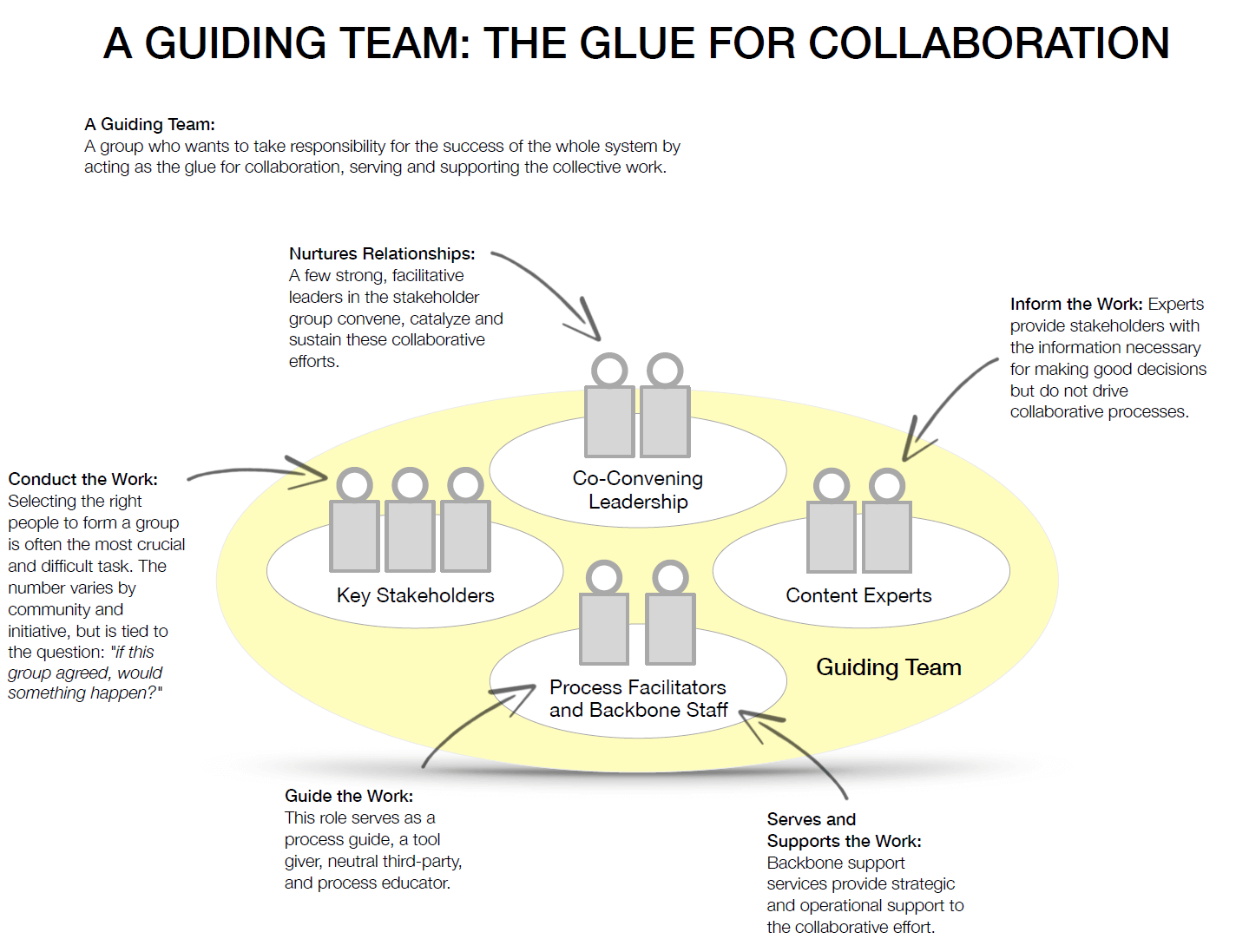Working at a systems level requires the collective leadership support of a guiding team. A guiding team is a small group that works on developing the relatedness of the whole toward the essential purpose of the system; it seeks effectiveness. Its aim is to shape and improve the relationships among the people, programs, and organizations to achieve the aim of the whole system. The team acts as the glue for collaboration, serving and supporting the collective work. Rather than working vertically within organizations, a guiding team works horizontally across programs, organizations, bureaucratic silos, and even the sectors of society. Working in this way requires the creation of a new set of leadership capabilities and capacities; skills which are uncommon in practice and not often taught.

Like a pit crew for collaboration, guiding teams learn how to work together through clearly defined roles, a process for engagement, and a collaborative structure that creates the mutually reinforcing actions necessary to redesign complex social systems. Guiding teams are coordinated by design.
There are five key roles of a guiding team: convening leadership, key stakeholders, content experts, process facilitators, and backbone support. In the systems building process, facilitative leaders convene and sustain the work, stakeholders do the work, content experts inform the work, process facilitators guide the work, and backbone support staff serve and support the work.
Download the Guiding Team Toolkit
The highest-level responsibilities of a guiding team are to:
- focus on the system,
- redesign the system by transforming relationships,
- create and sustain the conditions and processes through which stakeholders can learn and co-create solutions together, and
- lead by operating in service, rather than in control.
Once a guiding team has been formed and the initial key roles have been assigned, the group’s first responsibility is to co-design a collaborative process of engagement. It’s this stakeholder engagement process that is ultimately responsible for transforming the relationships of the stakeholders who shape the system and for evolving the system toward the desired outcomes.
It’s important to note that the work of redesigning a complex social system is not linear; the work is never complete. It’s a creative endeavor and an act of continuous improvement. Therefore, as a reminder of this principle, the engagement process is depicted as a circle or a wheel, rather than a line which has a definitive beginning and end. Supported by the guiding team, a group of stakeholders moves around the circle clockwise in a disciplined way, participating in a collective conversation that unfolds in stages.
Learn More About the Stakeholder Engagement Process
The most successful partnerships have a high functioning guiding team that takes responsibility for the system they seek to change. It can be called a leadership council, work team, executive council, taskforce, or coalition – the name doesn’t matter much. What does matter is having role clarity, commitment to a relational-way of working together, and a clear process for engaging and decision-making.

